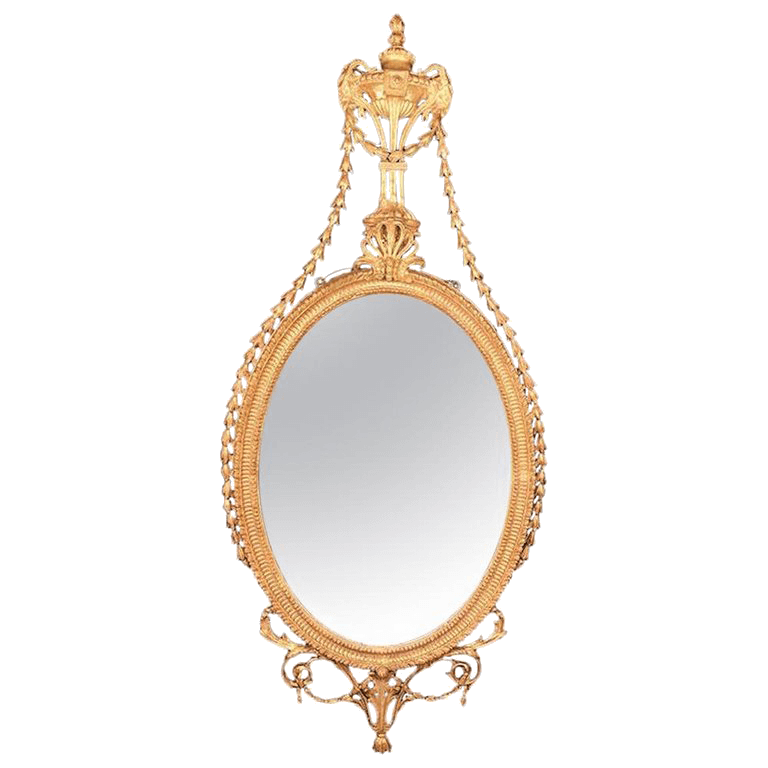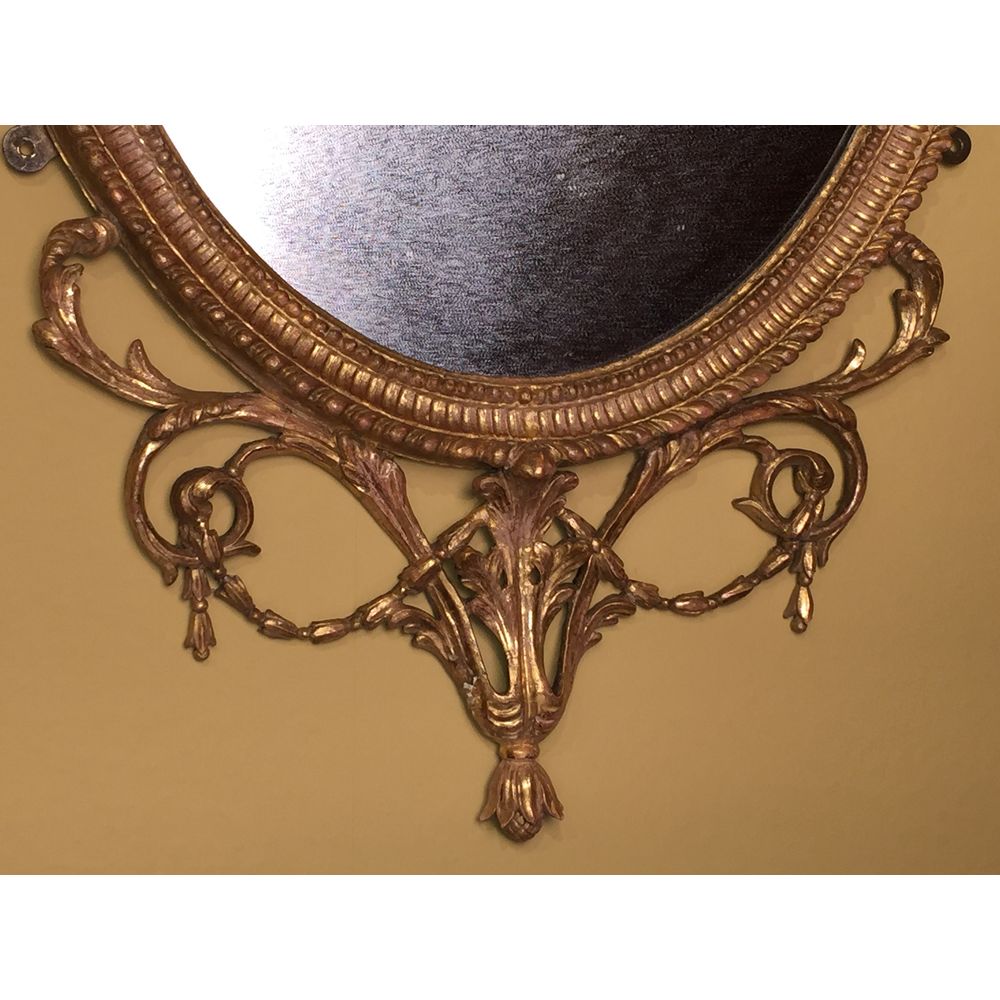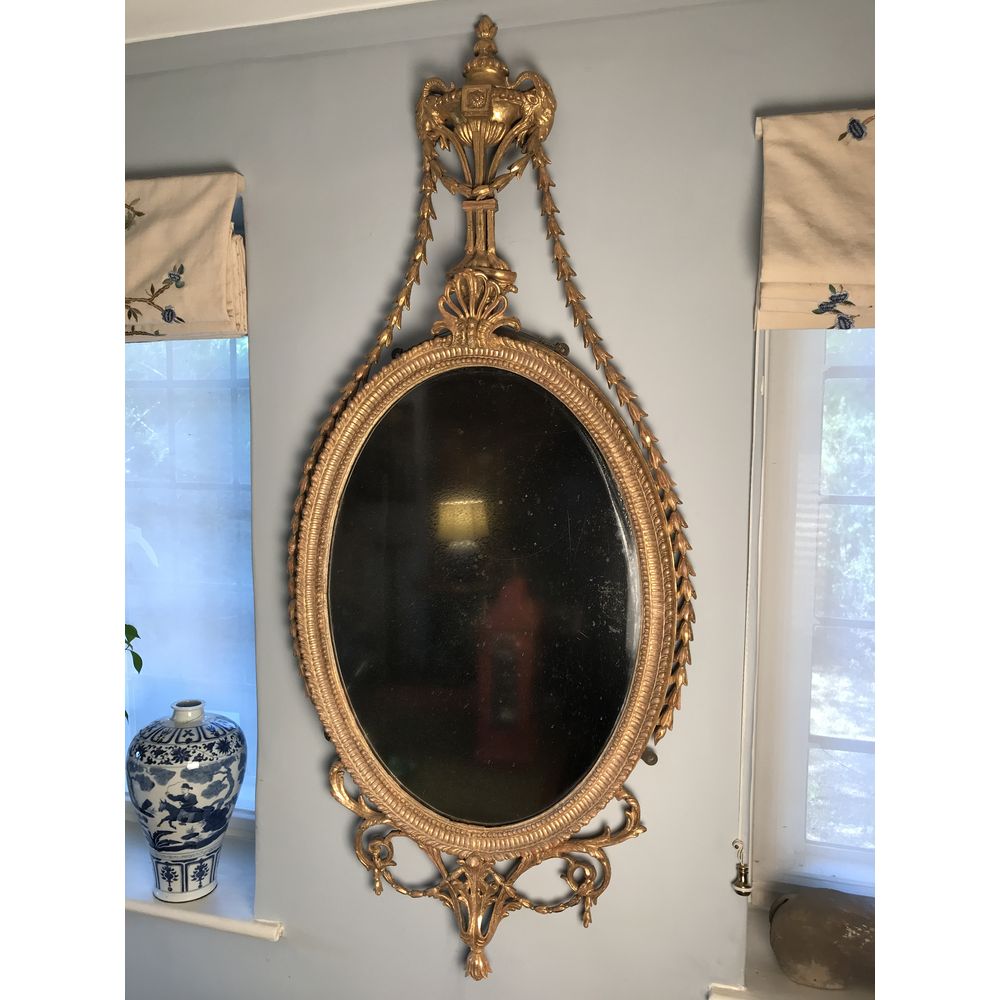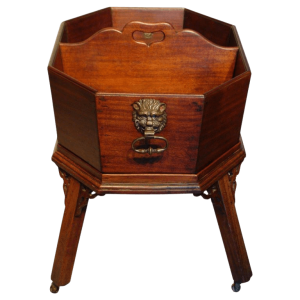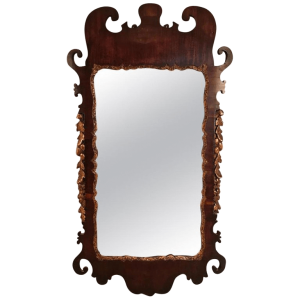Description
The finely carved oval frame surrounded by delicate foliate detail, trailing husks, a classical urn, palmette and ram’s heads.
This antique mirror dates from the George III neoclassical period. Mirrors, or looking glasses, from this period have a lightness of form evident in the slender frame and its surrounding delicate, sophisticated and mostly original water-gilded ornamentation, partially worked in ‘carton pierre’.
This mirror plate appears to be contemporary but may originally have been from another frame. This was often the case due to the extremely high cost of producing mirror plate at that time.
H: 132 cm.
W: 59 cm.
D: 7 cm.
Ref. BHA 1000
Classical motifs of this period include trailing husks, urns, acanthus leaves and rams’ heads are all typical of the designs of the important Scottish architect Robert Adam (1728-92).
Adam was perhaps the most sought-after and famous British designer working in the neoclassical idiom. He was the main force in the development of a style that extended beyond architecture and furniture to include many objects in a fine eighteenth century interior, including beautiful and extremely costly gilded mirrors and pier glasses.
Adam incorporated design ideas from ancient Greece and Rome into his forms and decoration. His numerous house commissions and their contents include, inter alia, Harewood House, Osterley Park and Syon House.
Born in Kirkaldy, Scotland, Adam was the son of the established architect William Adam, and followed his father into the family practice. In 1754 Robert embarked on a ‘Grand Tour’, spending five years in France and Italy visiting classical sites and studying architecture.
On his return he soon established his own highly successful and fashionable practice in London with his brother, James. They were much sought after by the top echelons of the English nobility of the eighteenth century.
A related oval mirror was sold in Christie’s ‘Hotspur & Norman Adams sale’ 20th November 2008 lot 57, (Later painted green and white, restorations, and 19th century mirror plate) @ £13,750.
Christies sold a related ‘regilt’ oval mirror, but lacking the trailing husk decoration, lot 88, 14th June 2001 @ £25,850.
See: ‘English Looking Glasses’ by Geoffrey Wills, p.122 ill. 147-150.



